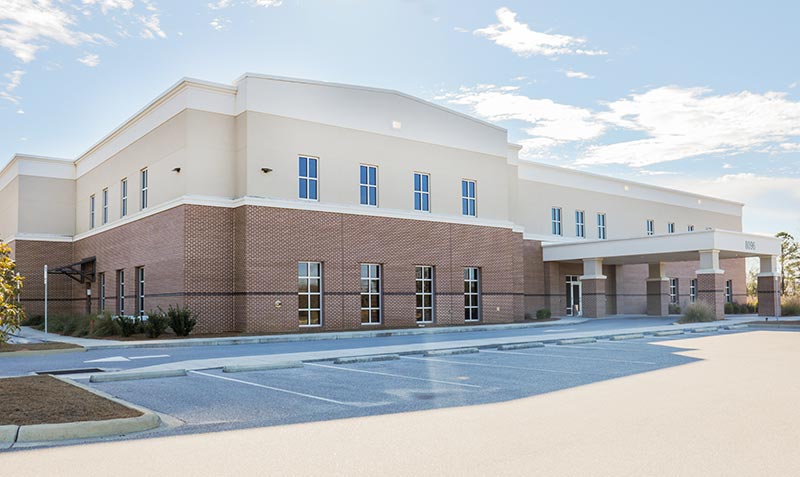Exactly How Urgent Treatment Clinics Enhance Access to Health Care for Patients With Immediate however Non-Emergent Medical Requirements
Urgent care centers have become a critical element in the health care landscape, addressing the needs of people that need prompt focus for non-emergent problems. By running beyond traditional workplace hours and using a streamlined technique to small injuries and health problems, these facilities not just lower the problem on emergency situation divisions but additionally improve total client access to prompt treatment. As we think about the ramifications of this model, it becomes vital to take a look at exactly how immediate care facilities are changing person experiences and outcomes in manner ins which warrant more expedition.
Duty of Urgent Treatment Clinics
Urgent treatment clinics play a vital duty in the healthcare system by offering prompt and accessible clinical solutions for non-life-threatening problems. These facilities work as an important bridge between medical care service providers and emergency departments, effectively minimizing the problem on hospitals while guaranteeing people obtain prompt care. By running expanded hours, including evenings and weekend breaks, immediate care facilities deal with individuals that might not have the versatility to visit a standard physician's office throughout conventional business hours.
The range of solutions provided at immediate care clinics consists of treatment for small injuries, diseases, and diagnostic services such as X-rays and lab examinations. This breadth of treatment permits individuals to address a variety of health and wellness concerns without the long delay times commonly related to emergency clinic. Furthermore, urgent care centers typically use a diverse team of health care experts, including medical professionals, registered nurse professionals, and physician assistants, that are equipped to take care of various clinical circumstances.
Advantages of Immediate Gain Access To

Additionally, immediate accessibility minimizes the burden on health care providers and emergency situation departments by drawing away much less crucial cases to appropriate setups. This alleviates overcrowding in emergency areas, allowing those with true emergencies to obtain the urgent treatment they require without unnecessary delays.
In addition, the comfort of extended hours and walk-in accessibility implies that individuals can look for care without the need for visits, which is specifically advantageous for people with unpredictable timetables or those that may experience sudden health concerns. - Urgent Care
The accessibility of urgent care facilities cultivates a proactive approach to health, encouraging individuals to seek clinical suggestions and therapy earlier instead than later. This not only improves person fulfillment yet likewise advertises a culture of precautionary treatment, ultimately leading to healthier communities.
Contrast With Emergency Situation Rooms
Frequently, people discover themselves not sure whether to visit an urgent care clinic or an emergency room when encountered with a medical problem. Urgent care facilities are developed to address immediate yet non-emergent clinical worries, such as small injuries, infections, or health problems.
On the other hand, emergency situation rooms are equipped to take care of lethal circumstances and severe clinical emergencies, such as cardiac arrest, strokes, or significant injury. These centers use sophisticated diagnostic tools and specialist examinations, which can cause much longer wait times for individuals with less important issues. Generally, emergency situation areas tend to be extra pricey than immediate care centers, making urgent treatment a more cost-effective option for non-emergent needs.
Ultimately, while both urgent treatment centers and emergency clinic play crucial roles in the healthcare system, understanding their respective functions enables clients to pick the appropriate setting based on the urgency and nature of their medical problems.
Providers Offered by Urgent Treatment
Urgent treatment clinics supply a vast variety of services tailored to resolve non-emergent clinical requirements, making them a practical alternative for individuals seeking punctual attention. These facilities are outfitted to take care of numerous problems, consisting of small fractures, strains, and lacerations, which call for prompt care however do not necessitate emergency clinic treatment.
Additionally, immediate treatment centers supply diagnostic services such as X-rays and research laboratory tests, enabling for quicker analysis and treatment of health problems. Patients commonly existing with common conditions like colds, influenza, and infections, which can be successfully managed on-site. Urgent care facilities regularly provide precautionary solutions, consisting of vaccinations and health and wellness testings, contributing to overall public wellness.
One more vital service used is the management of chronic problems aggravated by intense symptoms, such as asthma or diabetes, guaranteeing people obtain prompt treatment without frustrating emergency situation services. Lots of centers likewise extend their hours beyond conventional office schedules, enhancing accessibility for patients that might need care during evenings or weekends.
Improving Patient Outcomes
Immediate treatment centers check that are geared up to handle a series of non-emergent clinical problems, including small injuries, infections, and hop over to these guys ailments. Their concentrate on easily accessible, top notch care allows patients to obtain proper treatments and preventative solutions, fostering far better health and wellness administration. Furthermore, these clinics typically utilize a multidisciplinary method, integrating different health care professionals to ensure comprehensive treatment.
Individual education is also a vital element of enhancing results. Urgent treatment carriers often offer advice on follow-up care, preventive measures, and way of living adjustments, encouraging clients to take an energetic role in their wellness. The mix of instant access, specialist treatment, and client education and learning not only boosts fulfillment yet likewise leads to boosted long-term health and wellness outcomes, strengthening the value of urgent treatment clinics in the healthcare continuum.
Verdict
In recap, immediate care facilities serve an important function in enhancing health care access for individuals with prompt, non-emergent medical demands. Inevitably, immediate treatment facilities are crucial in linking the void in between key care and emergency situation services, ensuring effective and accessible medical care for communities.
On standard, emergency situation spaces often tend to be a lot more expensive than urgent treatment clinics, making immediate treatment a more cost-efficient choice for non-emergent demands. (Urgent Care)

Inevitably, immediate care centers are important in bridging the space between key treatment and emergency solutions, guaranteeing efficient and obtainable medical care for areas.